Abstract
1. The formation of ethylene from cauliflower florets is stimulated by the addition of either methionine or its hydroxy analogue. 2. Formation of ethylene from these compounds may also be demonstrated in cell-free extracts, but the most rapid formation is achieved by the addition of methional. 3. Fractionation of such extracts has shown that both particulate and non-particulate fractions are necessary for the formation of ethylene from methionine or its hydroxy analogues, but only the non-particulate fraction is necessary for its formation from methional. 4. A study of this system has shown that the conversion of methional into ethylene requires the presence of two enzyme systems, the first generating peroxide and the second catalysing the conversion of methional into ethylene in the presence of peroxide. 5. The presence of a heat-stable factor in cauliflower extracts that is necessary for the full activity of the enzyme converting methional into ethylene has also been shown. 6. The nature of this factor is at the present unknown; it is not a metal nor is it identifiable with many of the known coenzymes.
Full text
PDF
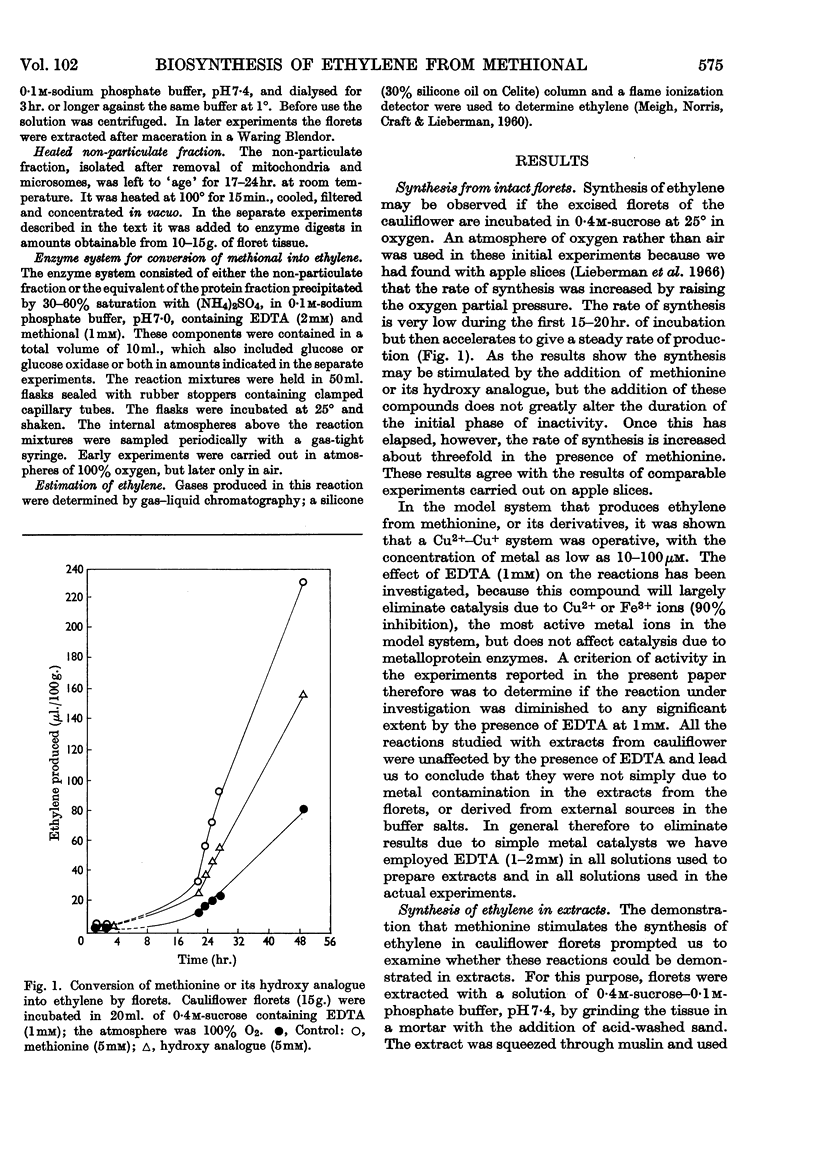
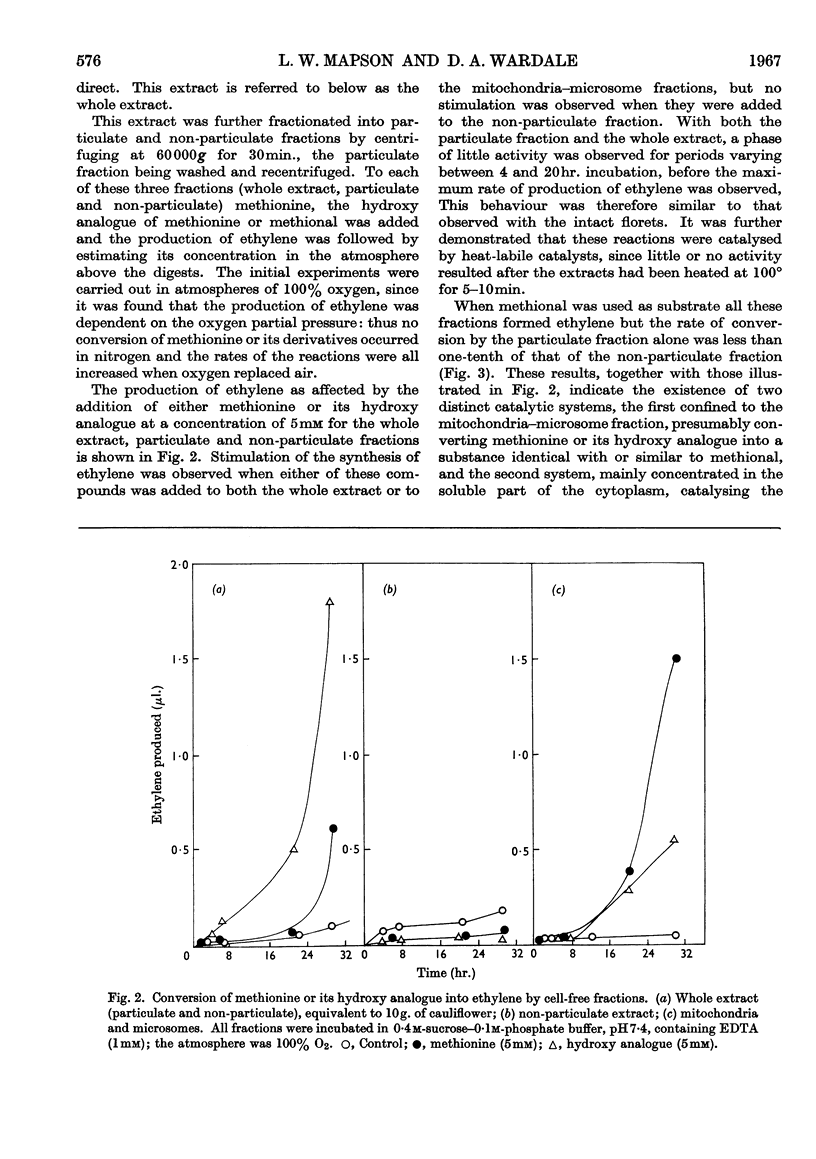
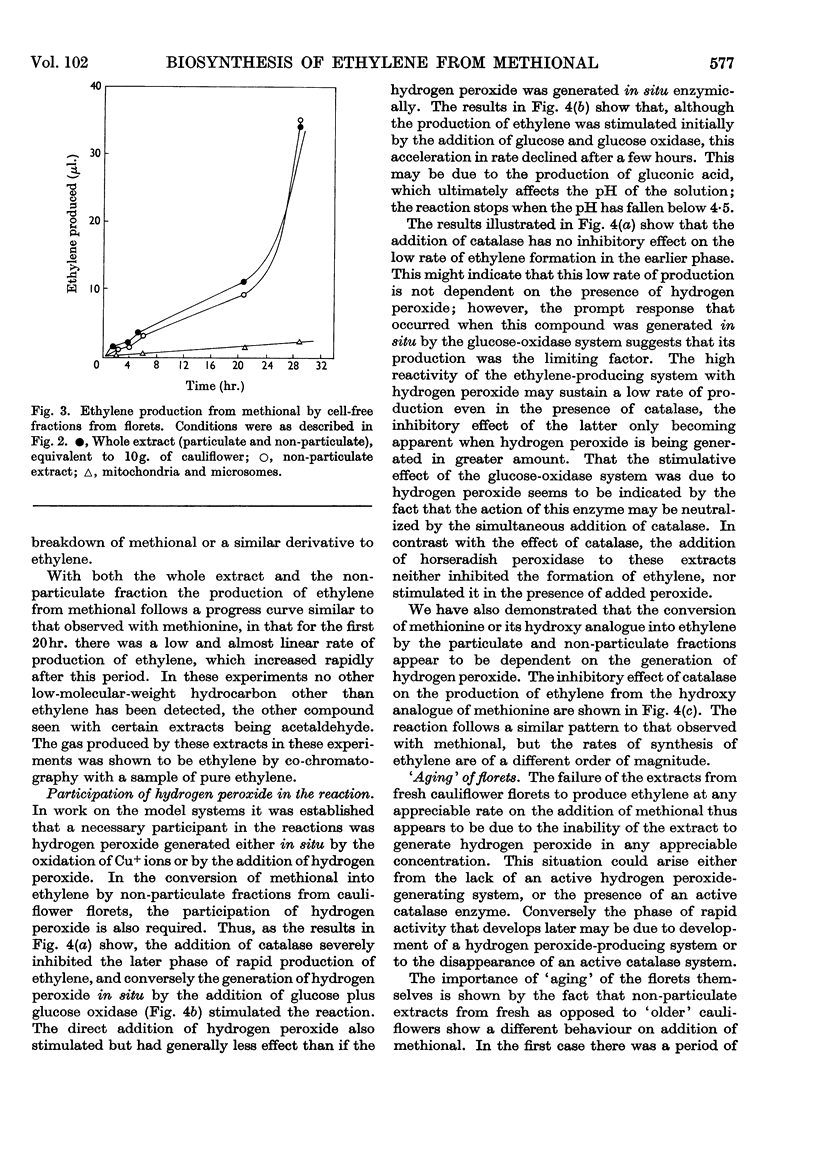

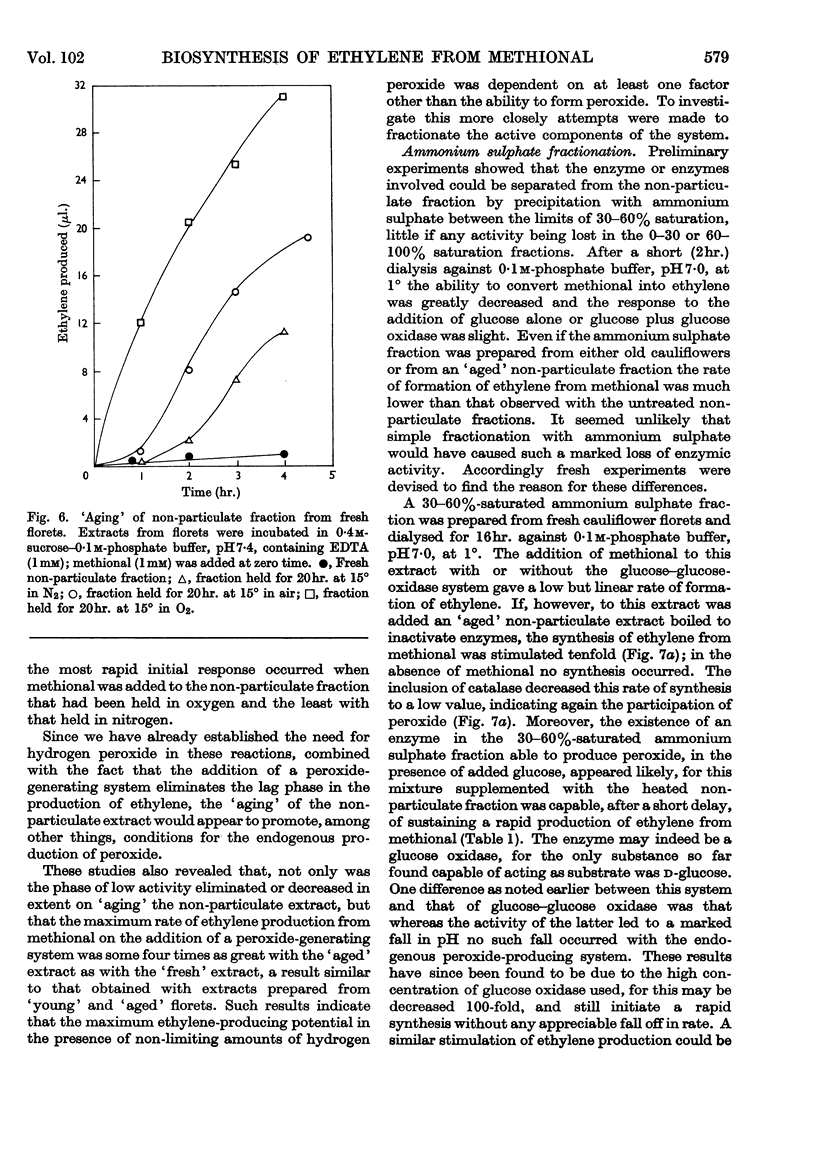
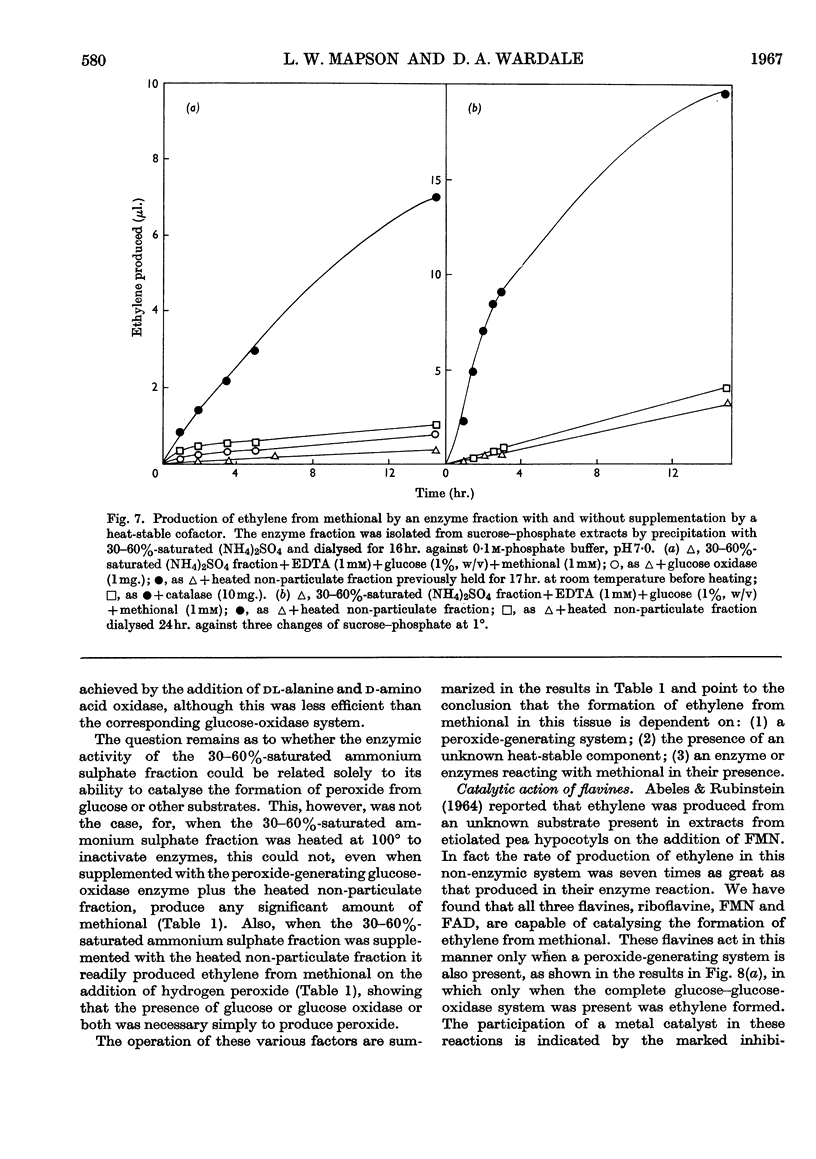

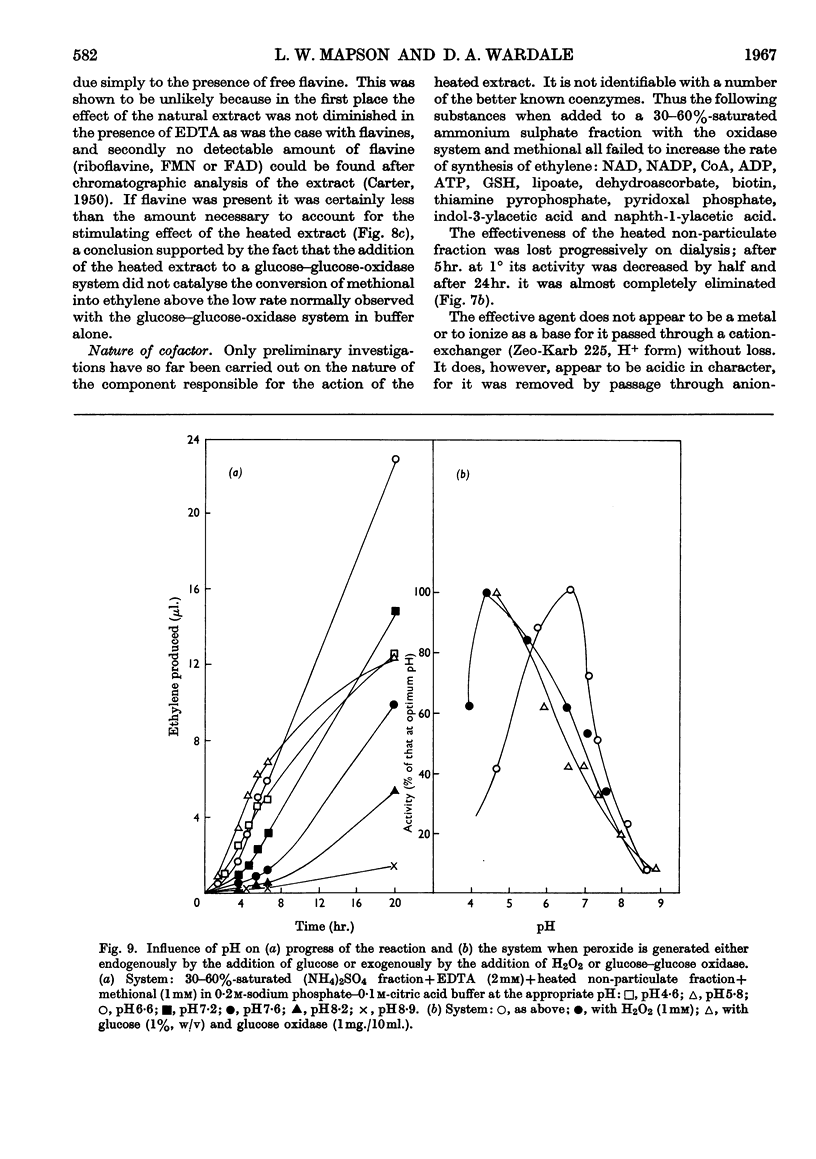
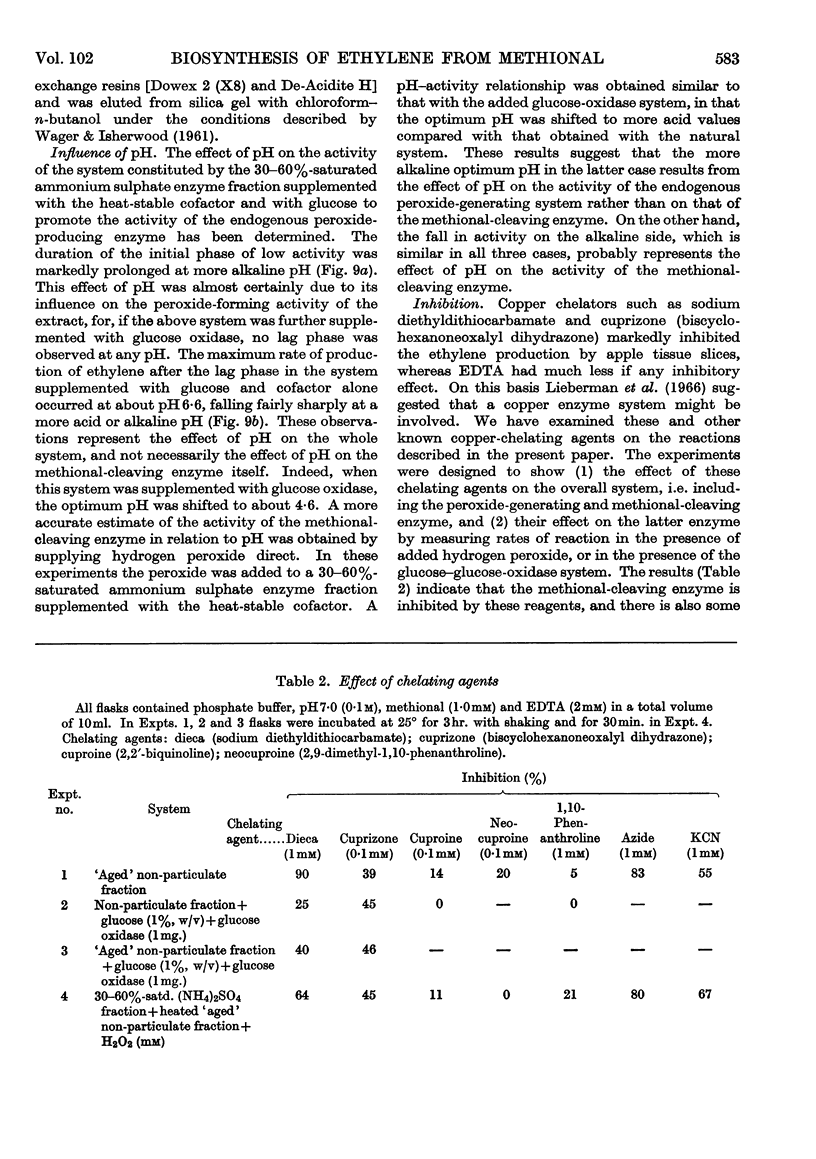

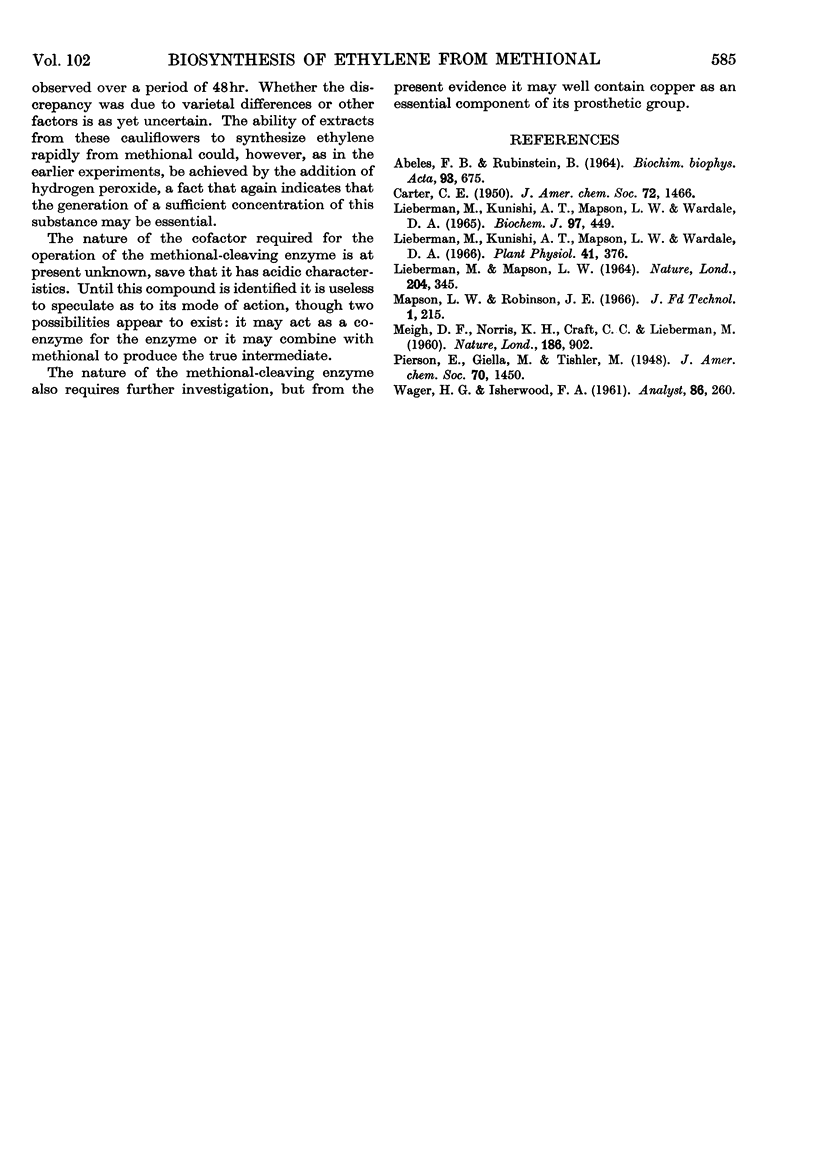
Selected References
These references are in PubMed. This may not be the complete list of references from this article.
- DHALIWAL S. S., GRIFFITHS D. A. HISTOLOGICAL REACTIONS OF BUFO MELANOSTICTUS TO CULTURE FILTRATES AND MYCELIAL EXTRACTS OF A PATHOGENIC FUNGUS. Nature. 1964 Oct 24;204:345–347. doi: 10.1038/204345a0. [DOI] [PubMed] [Google Scholar]
- Lieberman M., Kunishi A. T. Ethylene production from methionine. Biochem J. 1965 Nov;97(2):449–459. doi: 10.1042/bj0970449. [DOI] [PMC free article] [PubMed] [Google Scholar]
- Lieberman M., Kunishi A. Stimulation of ethylene production in apple tissue slices by methionine. Plant Physiol. 1966 Mar;41(3):376–382. doi: 10.1104/pp.41.3.376. [DOI] [PMC free article] [PubMed] [Google Scholar]


